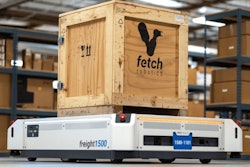
SKU identification codes are a powerful inventory management tool that revolutionized the practice of logistics. Assigning unique SKUs turns each physical product into a readable, identifiable and traceable piece of data making manufacturing, storing, picking, packing, shipping and tracking faster and far more efficient. SKU implementation is the reason inventory management has become a science rather than a scavenger hunt. Logistics professionals love SKUs.
SKU proliferation, however, doesn’t get the same kind of love. The number of SKUs “proliferates” when businesses increase the range of products they produce or stock in order to meet growing consumer demand for greater variety in product color, flavor, size, style, ingredient mix, price point or any other characteristic that has the hoped-for potential of increasing sales.
Back in college marketing classes, we were taught that such product expansions were called line extensions when options were added within existing product categories (think low-carb, low-fat or gluten free variations on snack foods), and “brand extensions” was when a brand added new offerings across product categories. Product expansions have been a major part of retail planning and operations for decades. When you factor in the ever-growing range of product categories that didn’t exist a decade ago, it’s easy to see why the number of SKUs continues to skyrocket.
Why does the material handling industry insist on identifying SKU proliferation as a “problem?”
- Are we being judgmental? Are people buying too much stuff? Are retailers selling too much stuff? Are customers becoming more discriminating? Or less?
- Are we being analytical? Sure, the growing volume of SKUs creates logistical challenges because the cost of managing more things is often higher while operational performance sometimes suffers. Is fill rate the most important measure?
- Are we being intimidated? Larger volumes, more diverse offerings and shorter delivery windows create more operational complexity. Are cost, storage space and scheduling pressures clouding our view?
Maybe there’s a better way to look at SKU proliferation: The economy is booming and consumers are willing and able to spend. That means the ability to successfully handle ever-increasing SKU volumes can be a powerful competitive differentiator. To become a powerhouse performer, you have to give your workers the proper tools and perspective they need to handle these increasing volumes.
Let’s begin with the proper tools:
To achieve operational success, distribution center workers need adequate space, time and motivation. Do you have systems in place to augment storage capacity, increase labor productivity and speed throughput?
- Do you use slotting software to create and maintain optimal warehouse layouts and product placement strategies?
- Are items assigned to locations and storage media according to size, weight, pick frequency, turnover velocity, carton characteristics and other handling characteristics?
- Are fast-moving items in the most accessible locations, kitted items kept together, heavy items placed to minimize damage, and slow-moving items stored on static racks to optimize total storage capacity and reduce travel times?
- Are order-picking processes flexible, designed for visibility and access and focused on minimizing touches and travel?
If not, you are handicapping your workers and undercutting your own competitive position.
Now about adopting the proper perspective:
When workers are constantly pressured on numerical measures, their processes can become mechanical. This is neither ergonomically nor emotionally beneficial for their own health or the health of your operation. Retailers have increasingly become aware of the importance of the “enhanced customer shopping experience.” Why don’t we extend this awareness to the DC workers who are an important factor in whether or not the customer is satisfied?
Here’s an example: Suppose you place an order to wear to an alumni event at your alma mater. You buy the shirt in a large size and pay for expedited delivery. It arrives on time and the quality is good and you have fun at your reunion. You have had a very satisfying customer experience because your order was fulfilled flawlessly. Had the inventory availability information been incorrect, had the order picker accidentally pulled the wrong or had the package arrived outside the promised delivery window, you would have had a highly unsatisfactory experience. Instead, the workers who filled this order got everything right.
Studies show that attitudes can change actions. Why don’t we empower DC workers not only by supplying the tools to get the job done but also by sharing acknowledgment that the jobs they do are vitally important?
We all understand that SKU analysis and rationalization are tools that can positively affect your operation’s performance and profitability. Likewise, worker engagement can have similar positive effects on productivity, performance and customer satisfaction.
Let’s start including our DC workers in the customer experience equation. Given the proper tools and perspective, they’re our best defense against SKUmageddon.


















